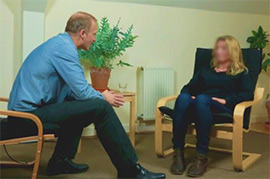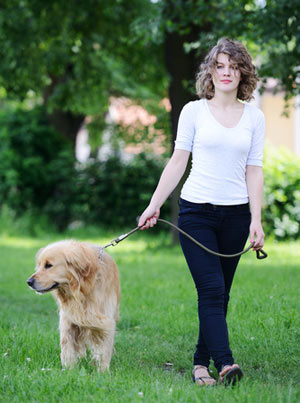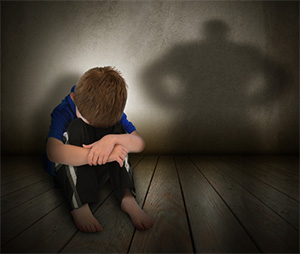I thought you’d like to see this video of Pippa Shay, an Uncommon Practitioner, talking about how she helped a child overcome trauma using the Rewind Technique, along with some other case examples.
Here’s a little more detail on the cases she discusses with me:
- A child who was traumatized by seeing a Taliban video on TV
- A woman who couldn’t stand to be touched having been strangled at one time
- A man who was traumatized after witnessing a suicide.
I hope it’s inspiring for you to hear that even the most terrible of traumas can be lifted quickly. Watch it below:
More articles on PTSD treatment:
- Why There’s No Need To Relive the Trauma All Over Again
- 3 Ways to Spot Trauma in Your Clients
- 3 Easy Questions in Diagnosing PTSD
Video Transcription:
Pippa: …a couple of examples There was a man who came to me who was in an incredibly bad state. He was shaking from head to toe, he couldn’t even close his eyes for relaxation to begin with at all because he’d seen a stranger jump to his death in front of him. And so he kept replaying in his mind that whole scenario of seeing the guy and watching the event unfold so every time he closed his eyes, that’s all that he could see.
So I used the Rewind as one of the techniques with him and within that one session that memory had all changed for him, and he was able to see it from a different perspective. He knew it had still happened and he still felt a lot of feelings about the guy and for the guy, and sorrow and grief for him, but he wasn’t replaying the horror of it. He was able to see it completely differently.
There was a little girl I worked with as well, who had accidentally watched some video footage of the Taliban, and her father at that time was living in Afghanistan. And so the parents didn’t know that she’d seen that but she’d started running away from home and from school, and basically she was trying to run away from herself – from her mind and what it was doing. She was replaying the taliban that she’d seen, and thinking they were after her father, and they were going to get her father. And so we were using the Rewind technique to change the taliban to being in nappies, and ballet tutus and stuff like that, and she began to see things very differently and then when she did think of them, she just saw them as really silly people and they had no threat to her father.
Her father’s now back in this country, so all is well. A lady I worked with as well had a young child, and if the young child wanted to cuddle her or tickle her she’d freak out – especially if the child’s hands went near her neck, and it turned out she’d had somebody attempt to strangle her. And so any time there was any physical contact, anywhere near her neck, or that part of the body she’d be back there in that situation again. So using the Rewind we changed that experience for her, and she was able to have cuddles with the little girl, put the little girl’s hands and arms around her neck and no problem at all. So those are just a few examples. I use it for all sorts of things – from major to minor things and in different ways but to help people to see incidents that have happened, but in a different way, so they still know that the thing has happened but the emotional content is taken out of it.
Mark: That’s right, isn’t it. it’s not as if they don’t know if was bad at the time – but it doesn’t feel so horrifying to think about. It’s more like they can choose to think about it or not rather than the memory comes to them and control kind of thing. It’s interesting about the taliban; you’re talking about sort of vicarious trauma. How people can see something on tv.i think after 9/11 particularly there were thousands of reported cases of people, because we were shown the images over and over on the tv and it’s very easy to be vicariously traumatised or hearing someone else describe something. I’ve worked with people who have – you know, their imagination kicks in and we can traumatise ourselves through what we imagine. The imagination is powerful. What’s the sort of thing you’ve noticed after you’ve done the Rewind in the way that someone relates to the memory? Obviously they’ve still got the memory…
Pippa: I think one of the many things, even for very traumatic things is that they can think back on them and even laugh, which is extraordinary if you think of something that has been terrorising them. You were talking about 9/11 – at the time that that happened I was working at the BBC and so I was watching even more footage than probably most people. I’d loved flying but after that I developed an incredible phobia. I wouldn’t go on a plane – I’d take the ferry or the train or whatever instead. So I actually did then, once I learned it, the Rewind on myself! I booked another flight this year!
Mark: I did the Rewind on myself for public speaking, years ago and because I’d done public speaking and had a panic attack at the beginning, the thought of doing it again was horrifying but then I thought, “hang on a second, I know about this sort of thing!” I did the Rewind and ever since then, for better or worse, I never get anxious at all really.
Pippa: It’s amazing, isn’t it? I used the Rewind with a group of people a couple of years ago I did a spider phobia workshop at the Coxwall Wildlife Park, which is in Oxfordshire here and the Rewind was one of the techniques I used, and some of the people had developed that phobia from parents, or from themselves, it didn’t matter. I worked with people who’d been so scared of spiders they’d run naked down the street from their bathroom, to get help! And so using it in a group situation works equally well. I’ve also used it with a little boy and because of his age he didn’t really want to concentrate enough to close his eyes so i tried the Rewind and said “well we’ll do it with your eyes open this time” and it worked – it was amazing.
Mark: And as you say you can adapt it it’s really the principles that are the important thing. it is a technique which is quite structured but you can use it flexibly, once you understand it and once you’re confident with it.
Pippa: Something that I do with people who have the memory or the trauma that was very serious to them i’ll tell them before we do it that whatever we do i’m using it with the greatest respect for that memory. I’m not taking the mickey out of it – I really don’t want people to think “you’re just laughing at it” and it’s not important actually it’s just a way of rewiring the brain and the memory.
Mark: Yeah, and it’s interesting you mention that sometimes people laugh at it. I found personally that doesn’t happen so much if it was a traumatic memory – they were attacked, or something like that, but for phobias certainly. People now find that the thought of spiders is amusing, whereas 30 minutes before it was something that terrorised them That’s a really massive shift and if you laugh at something you’re seeing it from the outside, aren’t you – you’re more objective about it – that’s what humour is in a way.
Pippa: You’re seeing it from an observer’s point of view as well rather than really feeling it with the spider phobia workshop I got lots of normal spiders for them as well, but also found them a tarantula and the tarantula became fluffy – a cuddly kind of cute thing!
Mark: I always see tarantulas as more like mammals anyway! I remember seeing a couple in cuba and they were huge! you could have put sandals on them! That’s very interesting with spiders in particular I think it’s the movement as well that people don’t like, isn’t it – the scuttling.
Pippa: It’s the fright, when you see something suddenly move and you don’t know it was there.
Mark: Yeah, and that can tip in to panic sort of accidentally, can’t it? Someone could still jump if something moves quickly but then from that jump, they come down quickly that’s what we want.
Pippa: Yeah, to calm down quickly and see things in a different way.
Mark: Talking about you for a second, I saw that you were voted Challenge Oxfordshire Practitioner of the year…
Pippa: I was! which was amazing!
Mark: I heard that through the grapevine. Can you tell us a bit about that?
Pippa: Yes, that was something that I didn’t really know much about until I was asked to join in with it, if I might take part but I said no, because i’ve never been out there putting myself forward, going “look at me, look at me!” But I was encouraged to, and then I got through the first round, with enough people saying “yes” she needs to be in” and then word got out and the votes just kept coming in and it was incredible absolutely incredible to have won that – such an honour from the people I’ve worked with and it was with all different health practitioners throughout Oxfordshire doing all sorts of things – other hypnotherapists, other psychotherapists, nutritionists and younger people – and they picked me!
Mark: If you’d told me about it at the time I would have voted for you as well!
Pippa: I’ll tell you next time…
Mark: Well thank you very much, that was really useful keep doing the fantastic work you’re doing and it’s been lovely to talk to you.
Pippa: And you as well










